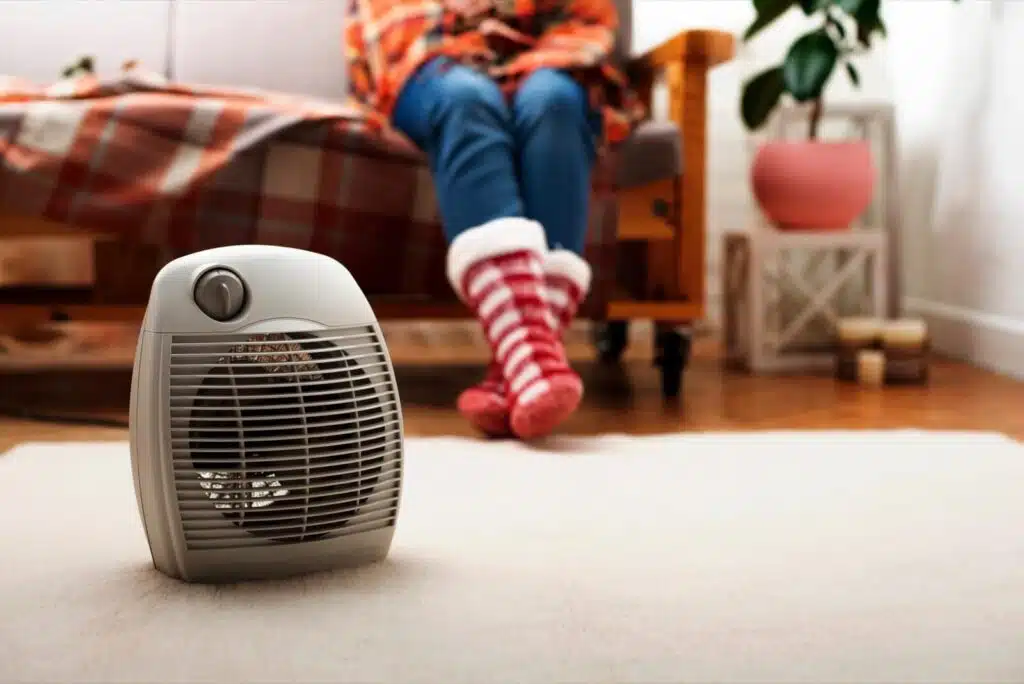
As the winter season progresses and it gets colder, sometimes we need a little extra to stay warm – whether it is due to a power outage from severe weather, or a little extra help in heating our homes. Portable heaters are convenient and effective, but it is important to understand the hazards when using them.
According to the U.S. Fire Administration, home portable heater fires were a very small portion (only 3%) of all home heating fires from 2017 to 2019. However, these fires were responsible for 41% of the fatalities resulting from home fires.1 Here are some important things to consider when deciding to use a portable heater.
First, choose the appropriate heater for the purpose you intend. Choose an electric unit if you are planning to heat a single room inside your home. Fuel-burning units are more powerful but they also produce carbon monoxide and are not recommended for use inside unless there is ample ventilation.
There are several different types of electric portable heaters: infrared, ceramic, forced air, and radiant, which may overlap. For example, infrared and ceramic can also be forced air if they have a fan. When deciding which to use, safety should be a priority. Whichever you choose, consider these six safety precautions:
- Ensure the device is on a flat, stable surface and maintain at least three feet from anything flammable. The leading cause of home fires caused by portable heaters is placing them too close to flammable objects. Remember, portable heaters are a heat source that will burn items such as curtains and upholstered furniture.
- Never leave portable heaters unattended. Think of the heater as you would a candle. You do not leave an open flame from a candle unattended; this should also apply to portable heaters.
- Keep out of reach of children and pets. It is recommended for those households with young children and pets to keep portable heaters elevated and out of reach.
- Plug it directly into the outlet. A surge protector may not be rated to maintain the power demand needed for the portable heater and can cause a fire if it is overloaded.
- Have a working smoke and carbon monoxide alarm nearby. Carbon monoxide is colorless and odorless and is very difficult to detect. Ensure your smoke detector and carbon monoxide alarm are both working properly and their batteries are replaced regularly.
- Watch for signs of malfunction. Thankfully, newer portable heaters have safety features such as a tip-over feature that will shut it off upon being knocked over and an over-heat sensor that shuts the heater off if it gets too hot. However, if you have an older model or are unsure of the safety features, do not operate the heater if anything seems out of the ordinary.
Keeping warm during the cold winter months is important to your safety as well as comfort, and for many, portable heaters are the best choice. Taking precautions and operating them properly can add an additional layer of comfort, knowing you are being as safe as possible.





